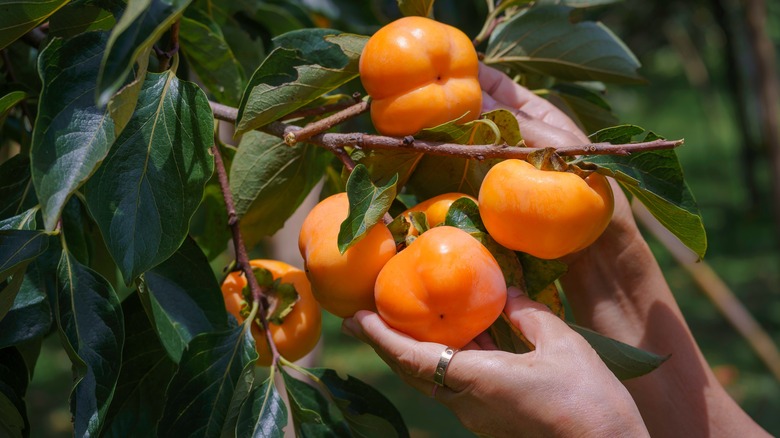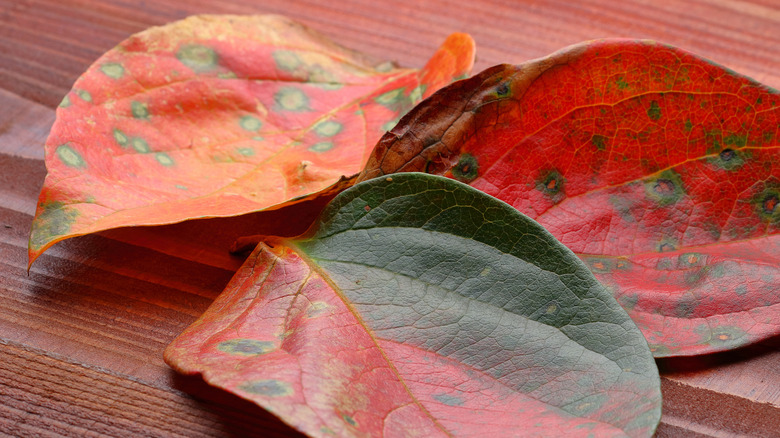How To Identify And Treat A Common Problem With Persimmon Trees
Fruit trees are often identified by what they produce, but persimmon trees can be a little tricky. From afar, a persimmon is often mistaken as an apple, orange, or a peach. And depending on the variety of tree, the fruit will look different. There are two categories of persimmon trees: Asian persimmon (Diospyros kaki), grown in USDA Hardiness Zone 5, and American persimmon (Diospyros virginiana), suitable for zones 4 to 9.
The American persimmon's fruit is dark orange, soft, and oblong with a pointed tip while the Asian persimmon's fruit is orange-yellow, firm, and squat with a flat bottom. Both varieties can be dried, used in baked goods, sliced into salads, roasted for dinner, and are high in vitamins A and C. A thriving, high-yielding persimmon tree is every gardener's dream, which is why it is crucial to identify and treat diseases as soon as possible.
Leaf spots, spurred by disease-causing fungi, are a common disease of persimmon trees. And not all leaf spots are created equal. Some can form a parasitic lichen, while others affect both leaves and fruit. One of the more prominent leaf spot diseases is caused by a fungus called Pseudocercospora diospyricola. This pathogen produces small dark specks that spread into larger splotches. The leaves eventually turn yellow and drop. Although it's beneficial for the infected leaves to be removed, an abundance of premature defoliation can impact the tree's ability to yield and ripen fruit. A bare tree also becomes more vulnerable to damage caused by freezing temperatures.
Treating and preventing leaf spots on persimmon trees
Although infected leaves will not recover from their spots, your best approach to treatment is to keep it from spreading onto healthy leaves and other plants. When the tree is blooming, spray it with a fungicide, and repeat the application three to four weeks later. Fungicide should be used to protect other leaves, so don't spray infected leaves thinking that the blemishes will disappear. As always, follow the manufacturer's instructions when using fungicide. Remember that the spotted leaves can continue spreading disease on the ground, so get rid of the foliage immediately. Don't use them as mulch around other plants.
Since disease often spreads under wet or extremely humid conditions, take preventative measures like pruning the tree to increase air flow and light for its inner branches — a good practice for preventing leaf spots on any tree. After pruning a tree, sterilize the pruning shears to avoid transmitting the disease around your garden. Also, water the tree at its base (not overhead) to keep the leaves dry and to avoid splashing pathogens onto healthy foliage.

